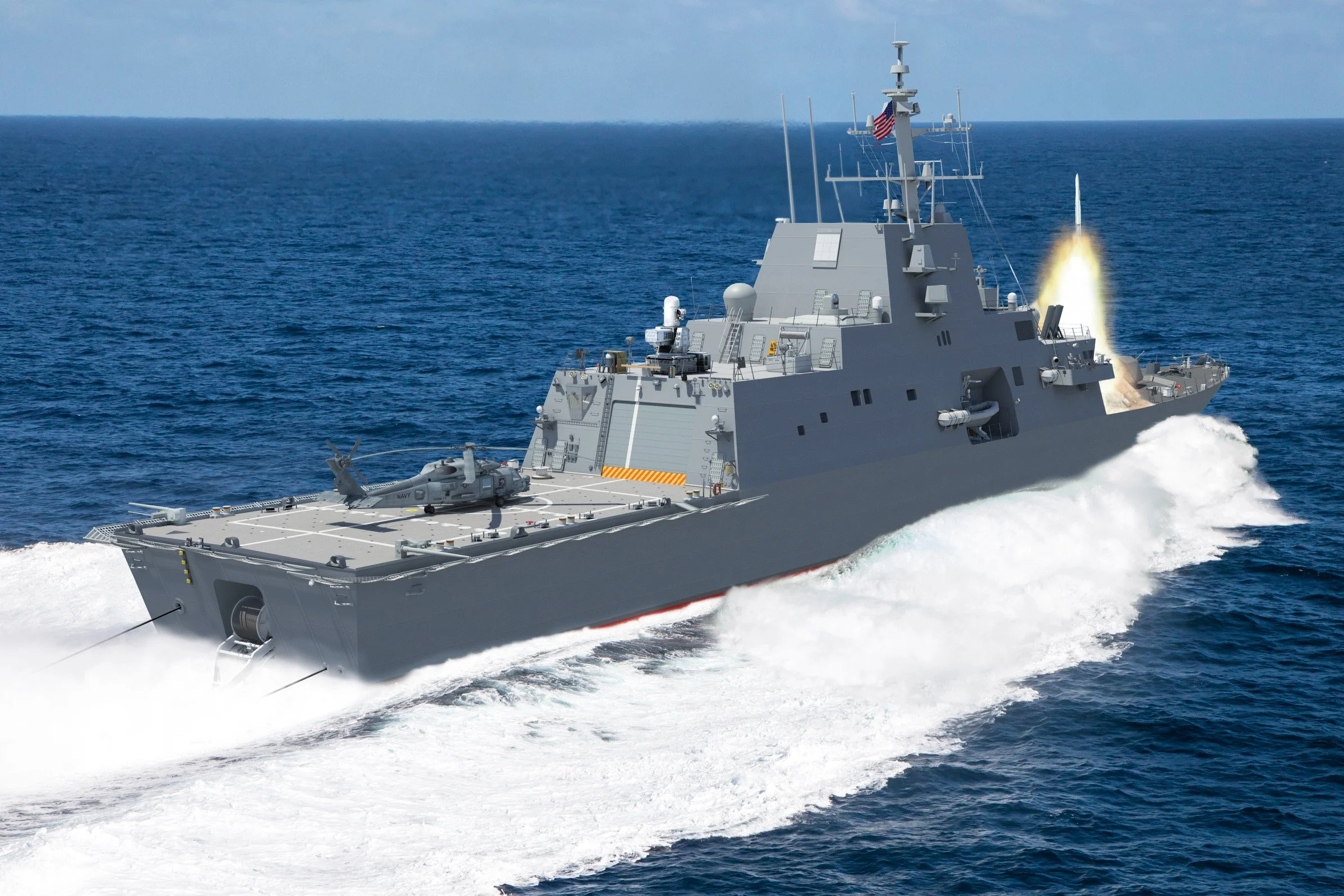By: Sam LaGrone
May 28, 2019 5:46 PM • Updated: May 28, 2019 7:09 PM
Lockheed Martin FFG(X) design. Lockheed Martin Image
Lockheed Martin won’t submit a bid to compete in the design of the Navy’s next-generation guided-missile (FFG(X)) frigate competition, company officials told USNI News on Tuesday.
The company elected to focus on its involvement developing the frigate combat system and other systems rather than forward its Freedom-class LCS design for the detailed design and construction contract Naval Sea Systems Command plans to issue this summer, Joe DePietro, Lockheed Martin vice president of small combatants and ship systems, told USNI News.
“We reviewed the entire program and obviously, given some of the stuff that has already happened that is outside of the contract for the program – that includes the designation of our combat management system, COMBATSS 21, derived off of Aegis; we have the Mk-41 vertical launch system; the processing for our anti-submarine warfare area; advanced [electronic warfare] and platform integration,” he said.
“As we evaluated all of those different areas, we determined not to pursue, as a prime contractor, the FFG(X) detailed design and construction.”
The company informed the Navy on May 23 it would not join the other bidders for the hull design, two sources familiar with the notification told USNI News.
While the design passed two Navy reviews, the company told the service it felt the Freedom design would be stretched too far to accommodate all the capabilities required, one source told USNI News.
Last year, Lockheed was one of five contractors awarded a $15-million initial design contract to refine an existing ship design for the 20-ship class of guided-missile frigates. The company was set to base its frigate design on the Freedom-class LCS design.
Huntington Ingalls Industries, Austal USA, Lockheed Martin, Fincantieri Marine and General Dynamics Bath Iron Works were similar contracts in 2018 to refine their own frigate parent designs.
Lockheed Martin, if it had won the business, would have intended to build the frigate at the Fincantieri Marine-owned Marinette Marine shipyard in Wisconsin. Likewise, Fincantieri is set to build its FFG(X), based on its Italian Fregata europea multi-missione (FREMM) design at the same yard.
Lockheed Martin partnered with Marinette Marine to build the Gibbs & Cox-designed Freedom-class LCS. In 2004, the Navy awarded the team a contract to build USS Freedom (LCS-1) and USS Fort Worth (LCS-3).
In 2009, Marinette was bought by Fincantieri. The relationship between the yard and Lockheed Martin has been tense at times over last decade, as Fincantieri moved to modernize the yard while the Freedom class was still under construction.
While Lockheed is moving away from leading a frigate team, the company will be heavily involved with whoever wins. The FFG(X)’s COMBATSS-21 Combat Management System will be derived from the company’s Aegis Combat System, and Lockheed Martin makes the ship’s vertical launch system.
Still, including four multi-mission surface combatants (MMSC) planned for the Royal Saudi Navy, Lockheed will have produced 20 hulls derived from an Italian superyacht.
“We’re still committed to shipbuilding with our different roles, whether it be as the ship construction prime on LCS and MMSC or as a systems integrator, combat systems or even as a product provider as we do with machinery controls and other areas,” DePietro said.
The Navy plans to issue a final detailed design and construction FFG(X) RFP with the final contract to be awarded in 2020.
USS Wichita (LCS-13) conducts acceptance trials on Lake Michigan on July 11, 2018. Lockheed Martin Photo



